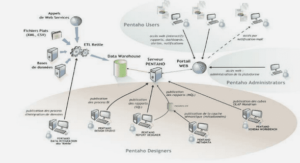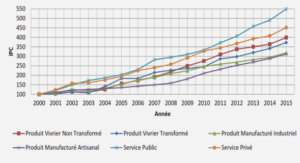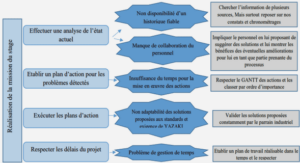Microgrid operation and islanding
MG operates in grid-connected and islanded mode. In the grid connected mode, MGs has an active interaction with the utility grid in order to send or receive the power. In the islanded mode, when the MGs is not connected to the utility grid, a special design of ESS is a requirement to ensure an autonomous operation. One of the important features of a MG is the ability to be islanded from the utility grid at the PCC. During utility grid disturbances, MG is disconnected from the grid to operate in autonomous mode and uninterrupted supply of consumer loads. The MG master controller would offer the optimal operation by maintaining the frequency and voltages within permissible ranges. The islanded MG would be resynchronized with the utility grid once the disturbance problem is resolved (Chaoyong, Xuehao, & Dong, 2010). Because of the complex characteristics of the MGs such as the bidirectional power flow, presence of different energy sources, power management, power quality problem and considerable presence of power electronics, the control of the MG in each operation mode or the switching between one mode to another are problematic and need an optimal solution in order to increase the efficiency and reliability (Dörfler, Simpson-Porco, & Bullo, 2016), (Bidram & Davoudi, 2012). There are two common control architectures included in centralized and decentralized approaches:
• Centralized control approach has advantages in standardization procedures and easy implementations and the central controller makes decisions about the dispatch of all DGs and ESSs according to the objective function and constraints (Olivares, Cañizares, & Kazerani, 2011);
• In decentralized control approach, each controller makes decisions locally. This has an advantage to reduce the number of messages and solving the problems locally. Multi-agent and cooperative approaches are one of the controls used in decentralized MG (Cai, Xu, & Mitra, 2011).
Developing of active damping approach for VSC
The VSC are intended to provide a controlled sinusoidal voltage with low total harmonic distortion (THD). A common practice to reduce the switching harmonics in the output voltage of the converter is to insert an LCL filter between the terminal of the inverter and the common AC bus. The presence of the LCL filter brings the risk of harmonic resonance of the filters. Many methods have been proposed to improve the stability of an LCL filtered VSC among which the passive and active damping approaches. The passive damping approach utilizes a damping resistor in series or shunt with the filter capacitor / inductors. The passive damping resistor is robust and sometimes introduces un-acceptable power loss. Active damping approach involves only change in the control loops and does not bring additional power loss. However, the performance of the active damping depends on the used approach. In this section, an active damping method (without any additional sensor) equivalent to the implementation of resistors Rc (see Figure 3.7) is suggested and it is shown that the bandwidth of the LCL filter with the proposed damping method can be extended further than that with a conventional passive damping. The idea is either to limit the bandwidth of the current controller so that the PWM converter does not excite the resonance of the LCL filter or to actively damp the resonance with feedback, from the LCL filter capacitor voltage or current. Before introducing the effectiveness of the active damping control, one mentioned the disadvantage of passive damping technique (Cho, Lee, & Sul, 2015; Geng et al., 2017; Samanes & Gubía, 2017). The idea is either to limit the bandwidth of the current controller so that the PWM converter does not excite the resonance of the LfCf filter or to actively damp the resonance with feedback, from the LfCf filter capacitor voltage or current. Before introducing the effectiveness of the active damping control, one mentioned the disadvantage of passive damping technique.
Conclusion
This thesis presents a comprehensive research work in the area of micro-grid enhancement utilizing renewable energy resources. It addresses the control and real-time implementation aspects of MG for practical applications. Several new algorithms and concept are introduced, supported by thorough analytical studies and approved by means of offline simulation and validated through real-time experimental implementation. Furthermore, the scope of presented work covers voltage source converter with single and three phase using as an active harmonic filter, bidirectional battery charger with five level converter for electric vehicle, photovoltaic system, gas generator set, water pump and electrical grid. The most significant conclusions of this research work are briefly summarized as follow:
• A thorough literature review of the past and the most recent research works in the development of MG and its reliability was conducted. A conceptual analysis to understand the functionality of the main element in MG control is carried out. Based on the given analytical study, a mathematical model is set up from which the control law of MG concept was extracted. Reported literatures on the power quality, energy management for standalone and grid connected system application based on MG concept were evaluated. A brief review on power factor and harmonic current compensation technique was also conducted;
• Extended reviews along with the feasibility of the ON and OFF grid mode of operation for the NZEH to ensure an uninterruptible power supply and to improve the power quality of the system were investigated. Furthermore, many controls algorithms have been investigated in order to find the best way to reduce the sensors’ number, the degree of control complexity, while keeping a better power quality as well as the system reliability. The NZEH based on MG concept was validated theoretically and experimentally for different scenarios of ON and OFF mode of operation. For ON grid mode, the standard norm of power quality is respected, the unbalance load, the harmonic and reactive power are respectively compensated adequately. The energy management between different sources is well evaluated and controlled depending on load demand. For OFF grid operation mode, the load voltage is kept clean and constant and the house remains continuously supplied even when the grid is disconnected;
The smart energy management was achieved through the developed fuzzy logic supervisor built on 25 rules. The mixed operation of photovoltaic system and gas generator set has contributed in the battery size reduction while ensuring an uninterruptible power supply. The Gas Generator Set was integrated successfully with other energy sources to ensure uninterruptible power supply. The experimental results are promising and could be a benchmark for the MG many countries. Finally, the economic study has approved the reliability of the proposed MG system, and especially more reliable for the developing countries like African Central States; In summary, this thesis dissertation puts forward a novel approach and newly developed adapted control strategies for MG which not only contributes in the scientific and technical development for energy management and power quality improvement, but also reduces the overall system cost. It also proves that with a minutely adapted controller and a proper dispatch of locally available energy resources, significant advantages can be achieved. The research work reported in this thesis along with experimentally validated results would certainly be considered as a remarkable development in the field of migrorid technologies for remote area and grid connected mode and helps reaching the concept of Net Zero Energy House expected by many people worldwide.
|
Table des matières
INTRODUCTION
CHAPTER 1 STATE OF THE ART AND LITTERATURE REVIEW OF MICROGRID
1.1 Introduction
1.2 Concept of Microgrid
1.2.1 Microgrid advantages and disadvantages
1.2.2 Microgrid classifications
1.3 Distributed energy resource technologies for MG
1.4 Wind Energy Conversion System
1.5 Solar Photovoltaic System
1.6 Small-Scale Hydroelectric Generation
1.7 Biomass
1.8 Geothermal Energy
1.9 Stirling Engine
1.10 Fuel Cells
1.11 Microturbine
1.12 Energy Storage System Technology
1.12.1 Battery Energy Storage Technology
1.12.2 Flywheel Energy Storage Technology
1.12.3 Ultra-capacitor Energy Storage Technology
1.13 Vehicle to microgrid (V2G) and microgrid to vehicle (G 2V) interaction
1.13.1 Introduction
1.13.2 Plug-in Hybrid Electric Vehicle (PHEV
1.13.3 Electric Vehicles
1.13.4 Battery pack and ultra-capacitor used in PHEV and EV
1.14 Interface between V2G and G2V
1.15 Mode of charging and discharging of V2G and G2V
1.16 Charging time for PHEV and EV
1.17 Microgrid operation and islanding
1.17.1 Microgrid Protection
1.17.2 Net Zero Energy House based on Microgrid concept
1.18 Review of the main power electronics converters used in MG
1.18.1 Factors and Symbols used in AC Power System
1.18.1.1 Power factor for linear load
1.18.1.2 Power factor for nonlinear load
1.18.2 Factor and symbols used in DC power system
1.18.3 DC-AC Inverter with two level topologies
1.18.4 Single-phase half-bridge voltage source inverter
1.18.5 Single-Phase Full-Bridge VSC
1.18.6 Three-Phase Full Bridge VSC
1.18.7 Three-Phase Full-bridge current source inverter
1.18.8 Impedance source inverter
1.19 Multilevel power converter structures
1.19.1 Diode-Clamped and Capacitor-Clamped Multilevel Inverters
1.19.2 Multilevel Inverters using H-Bridges topologies
1.20 Power quality problems in Microgrids
1.21 Power quality solution for microgrids
1.21.1 Dynamic Voltage Restorer
1.21.2 Transient Voltage Surge Suppressors
1.21.3 Static VAR compensators
1.21.4 Passive harmonic filter
1.21.5 Power quality with active filtering devices
1.21.6 Active filter type of VSC configuration with three phase
1.21.7 Three-Phase four wire active filter VSC with midpoint capacitor
1.21.8 Three phase four leg of the active filter VSC
1.21.9 Hybrid Shunt filter without transformer
1.21.10 Hybrid active filter with two legs without transformer
1.21.11 Series Active Filter
1.21.12 Hybrid filter series
1.21.13 Unified power quality conditioner (UPQC)
1.22 State of the art of the technique modulation control
1.22.1 Hysterisis control
1.22.2 Modulated hysteresis control
1.22.3 Pulse-Width Modulation Control
1.22.4 PWM Space vector modulation (PWM-SVM)
1.23 Main controls algorithms used in power quality
1.23.1 PQ direct instantaneous power control method
1.23.2 PQ indirect instantaneous power control method
1.23.3 Synchronous Reference Frame (SRF)
1.23.4 Nonlinear control
1.23.5 Sliding mode control
1.23.6 Direct adaptive control with reference model
1.23.7 Indirect adaptive control
1.23.8 Control method based on Lyapunov stability
1.24 Conclusion
CHAPTER 2 CONCEPT AND DESIGN OF NET ZERO ENERGY HOUSE USING MICROGRID APPROCHES
2.1 Introduction
2.2 Description of under study system
2.3 Design of photovoltaic system for NZEH
2.3.1 Load characteristics and daily energy consumption
2.3.2 Power generated from photovoltaic system
2.3.3 DC bus voltage of VSC-AHF
2.4 DC bus capacitor calculation
2.4.1 Design of output VSC-AHF inductor
2.4.2 Validation of the VSC-AHF design using Semisel software
2.4.3 Proposed Control Algorithm for the NZEH
2.4.3.1 Synchronous reference frame and direct voltage control
2.4.3.2 Nonlinear direct control for current and direct control for voltage
2.4.3.3 Nonlinear direct control for current and nonlinear direct control for voltage
2.5 Modeling of bidirectional battery charger for PHEV
2.5.1 Modeling of buck-boost converter and controlling with sliding mode
2.5.1.1 Modeling of boost converter
2.5.1.2 Modeling of buck converter
2.5.1.3 Sliding mode control of the buck-boost converter
2.5.2 Modeling of the five level DC-AC bidirectional battery charger
2.6 Simulation results of the Net Zero Energy House
2.6.1 Simulation result of bidirectional battery charger for PHEV
2.6.2 Simulation result of the house connected to the grid
2.6.3 Simulation of Net Zero Energy House for ON/OFF grid operation
2.7 Economic analysis using PV*Sol software
2.7.1 System Check and optimisation
2.7.2 Economic Efficiency Calculation and report
2.8 Conclusion
CHAPTER 3 SMART HYBRID ENERGY MANAGEMENT OF STANDALONE SYSTEM BASED ON MICROGRID CONCEPT
3.1 Introduction
3.2 System description
3.3 Step for calculation of total energy demand and power supply
3.3.1 Estimated daily energy consumption and specification of the load
3.3.2 Size evaluation of photovoltaic array
3.3.3 Battery energy storage system
3.4 Modeling and control strategy of the under study system
3.4.1 Modeling and control of photovoltaic system
3.4.1.1 Mathematic model of solar cell
3.4.1.2 Modeling of photovoltaic module
3.4.2 Gas generator set and its advantages
3.4.2.1 Control strategy of GGS
3.5 Developing of active damping approach for VSC
3.5.1 Passive damping approaches and their disadvantages
3.5.2 Power losses calculation in the damping resistor Rc
3.5.3 Development of active damping approach
3.5.4 Approach for reducing the value of output filter LfCf using active damping technique
3.6 Fuzzy logic supervisor and its appliction domain
3.6.1 Fuzzy logic energy management used for the proposed system
3.6.2 Battery overcharging and system protection using water pump
3.7 Simulation results of standalone complete system based on MG concept
3.8 Conclusion
CHAPTER 4 EXPERIMENTAL REALIZATION OF NZEH AND STANDALONE SYSTEM BASED ON MICROGRID CONCEPT
4.1 Introduction
4.2 Net Zero Energy House hardware implementation
4.2.1 Step1: Test of dc-dc boost converter with small photovoltaic module
4.2.2 Step2: Test of NZEH with the single phase VSC-AHF
4.2.3 Step3: Improvement and performance of NZEH with industrial point of view
4.2.3.1 Design of printed circuit board for sensing and regulating the signal of Vs, Vdc, is, iF and iL
4.2.3.2 Offset of the input ADC signal and protection technique of the DSP
4.2.3.3 PCB interface card for the microcontroller eZdsp F28335
4.2.3.4 Implementation of the control algorithm of NZEH
4.2.3.5 Experimental result of NZEH
4.3 Experimental results for Chapter 3 (standalone system for remote area)
4.4 Conclusion
CONCLUSION AND RECOMMANDATIONS
ANNEX I OPTIMISATION OF THE INVERTER USING SEMISEL SOFTWARE
ANNEX II SYSTEM PARAMETERS
ANNEX III HARDWARE SETUP DETAILS
LIST OF BIBLIOGRAPHICAL REFERENCES
![]() Télécharger le rapport complet
Télécharger le rapport complet




